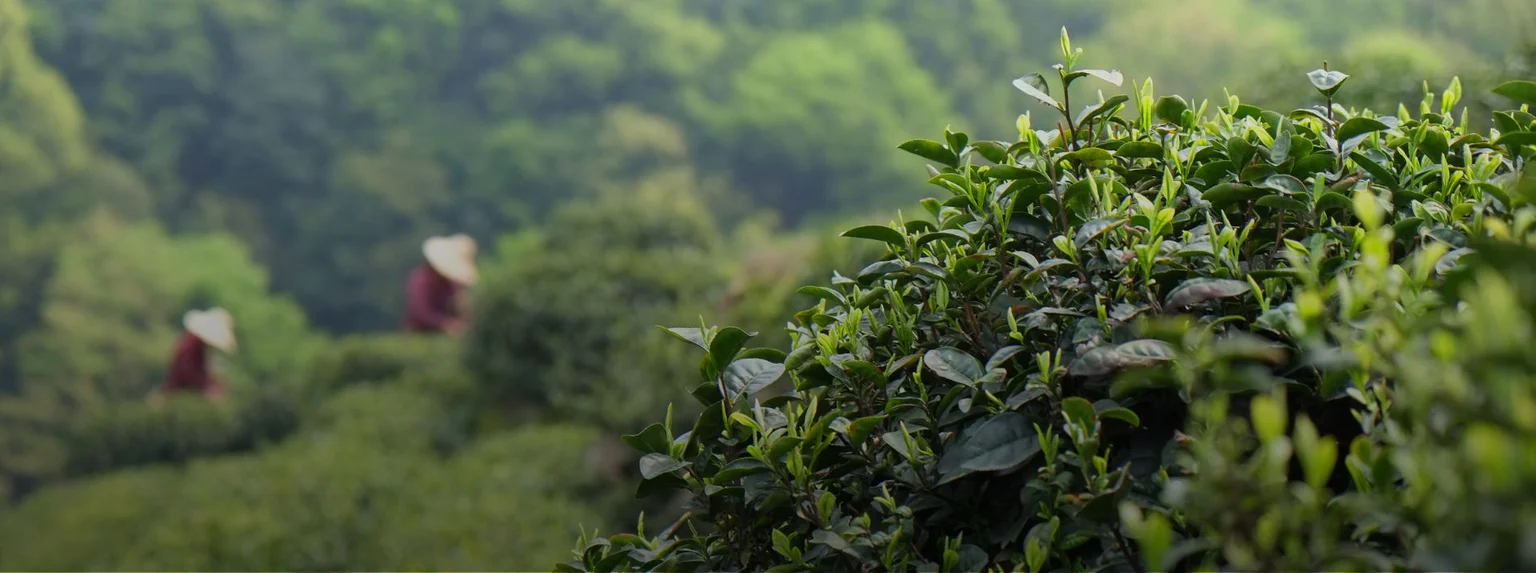
Blog
What kind of tea is suitable for brewing with different types of purple clay teapots?
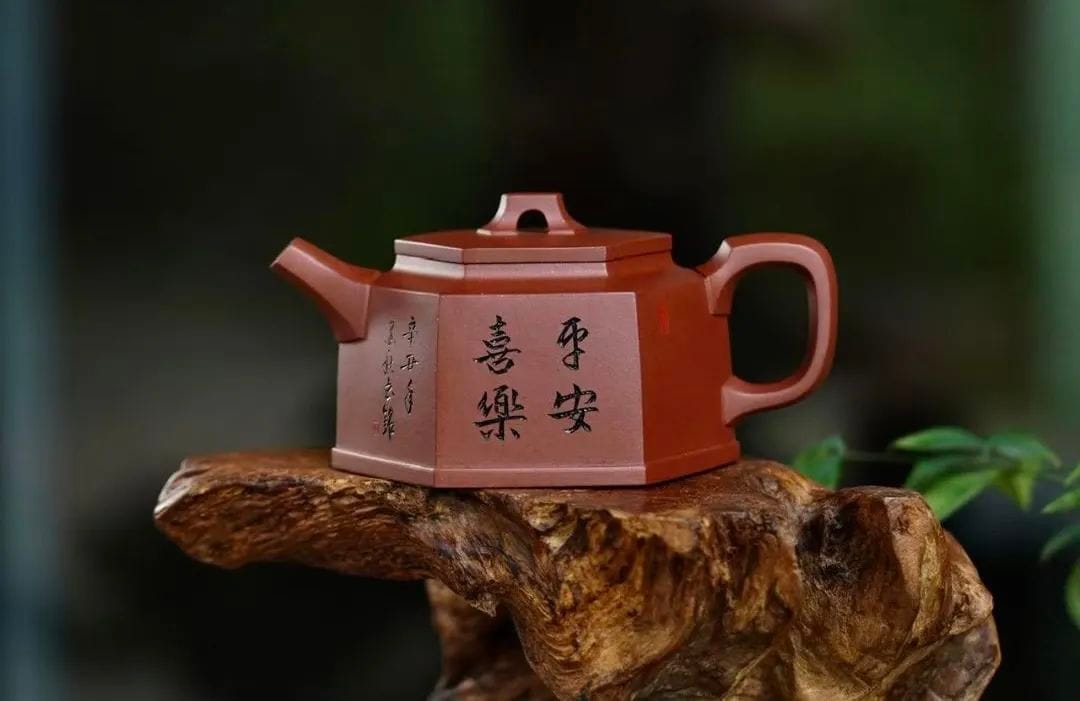
Zisha teapot is a unique handmade clay craft of the Han Chinese. Made of purple clay, it originated in Yixing, Jiangsu, China. Yixing purple clay teapots are the most famous. Yixing purple clay teapots do not take away the true fragrance of tea, nor do they have a cooked soup smell. They can maintain the color, aroma and taste of tea for a long time. Zisha tea sets are also popular because of their simple and unique shape and excellent temperament. After being soaked in tea and rubbed by hands, they will turn into an ancient jade color.
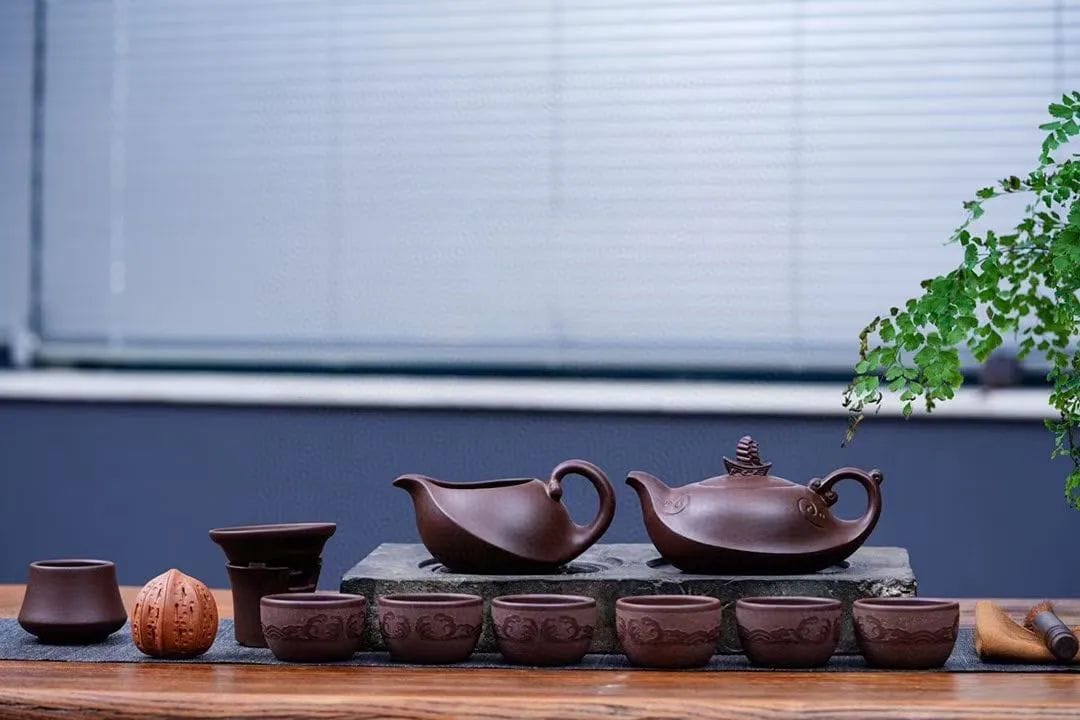
Purple clay teapot
What kind of tea is suitable for brewing in a purple clay teapot?
The unique double pore structure of the purple clay teapot allows it to absorb tea soup. A long-used purple clay teapot can brew a light tea soup with boiling water alone, even without adding tea leaves. Purple clay teapots are best used to brew semi-fermented tea or fully fermented tea. For example, Tieguanyin, Dongding Oolong, Dancong tea, Pu’er tea, black tea, etc.
Of course, purple clay teapots of different sizes also have different characteristics, so purple clay teapots of different sizes are suitable for brewing different teas.
What kind of tea is suitable for brewing in purple clay teapots of different capacities?
1. When brewing tea with a purple clay teapot, generally, a teapot with a higher frequency is suitable for brewing tea with a strong aroma, such as green tea; a teapot with a slightly lower frequency is more suitable for brewing tea with a strong flavor, such as oolong and Tieguanyin.
2. A flat purple clay teapot with a capacity of less than 200ml is most suitable for drinking Tieguanyin, because the teapot can reach a high temperature in an instant, which just meets the brewing requirements of Tieguanyin. (Pot shapes such as virtual flat pot, Hehua pot, imitation drum pot, etc.).

Purple clay teapot
3. Pu’er tea and black tea require a long heat preservation time. It is best to drink Pu’er tea and black tea with a deep, narrow and long purple clay teapot of about 250ml (such as Shipiao pot, Xishi pot, Dezhong pot, etc.).
4. A wide-mouthed purple clay teapot of about 250ml is a better choice for brewing green tea, because green tea is not suitable for long-term high-temperature soaking. It requires the tea set to dissipate heat as soon as possible (such as antique pots, well-rail pots, column bases, etc.).
What kind of tea is suitable for brewing with purple clay teapots of different shapes?
1.Square purple clay teapot
The key to making a square purple clay teapot is that the clay must be very evenly kneaded, as it is difficult and has a high failure rate when joining the pieces. The internal angles of the square vessel make it difficult for the tea leaves to roll and the water flow is easily blocked, but the square appearance is eye-catching in shape. Using a square purple clay teapot to brew Pu’er cooked tea can bring out the aged flavor of Pu’er, which is very suitable.
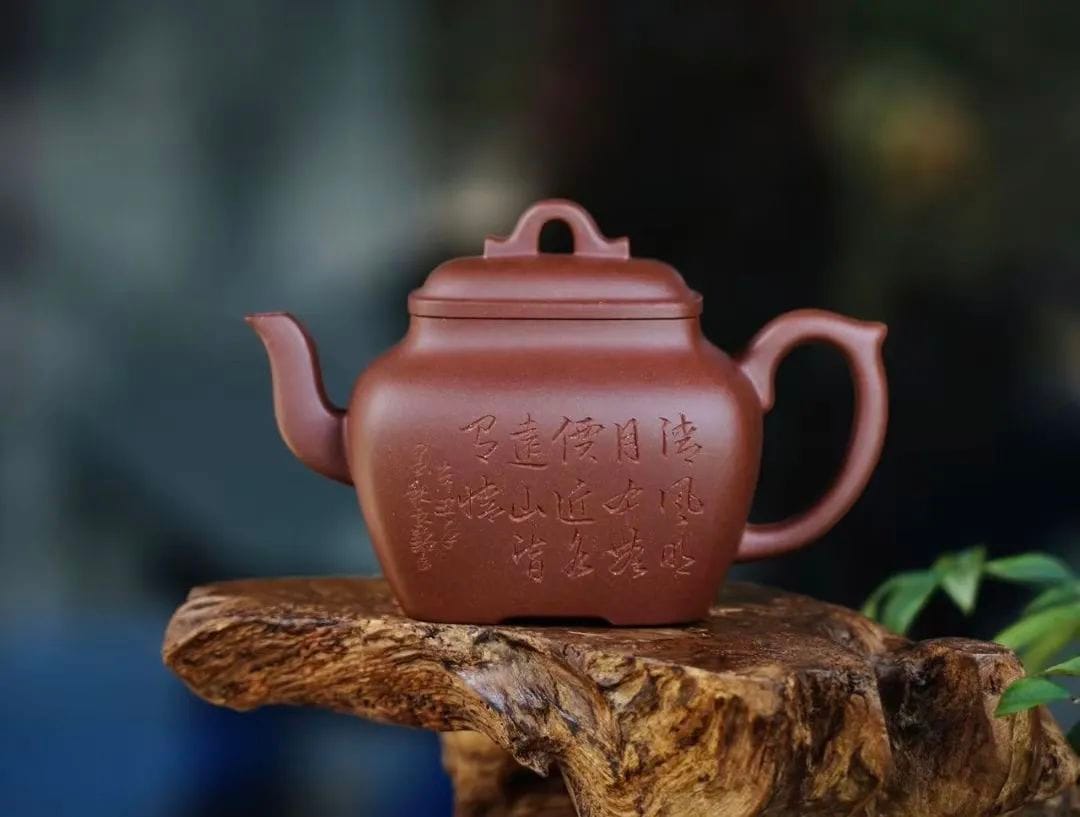
Square purple clay teapot
2. Flat-shaped purple clay teapot
Flat-shaped purple clay teapot is suitable for brewing Wuyi rock tea in the shape of strips. For example, a Duanni purple clay teapot is used to brew Wuyi tea after roasting. This purple clay teapot can always conceal the dry smell of roasting and fully express the charm of tea. The ratio of Yixing purple clay teapots to flat-shaped teapots is relatively low. The reason is that the sintering success rate (the so-called “finished product rate”) of this pot shape is low.
The flatter pot body has a full sense of stability, which can allow the strip-shaped tea leaves to be stable in the pot and release their fragrance at ease. When pouring water, due to the shorter pot wall of the flat pot, the water flow is naturally buffered, and the small space inside the pot makes it easier for the tea leaves to be soaked in the water without heat or fire, and gently spit out the essence.
The space of the flat pot does not allow for any private space, which gives Wuyi tea rock charm a solid display. If you want to brew aged Wuyi tea, or want to use a teapot to reduce the roasted smell of the tea, then a flat purple clay teapot is the most suitable.
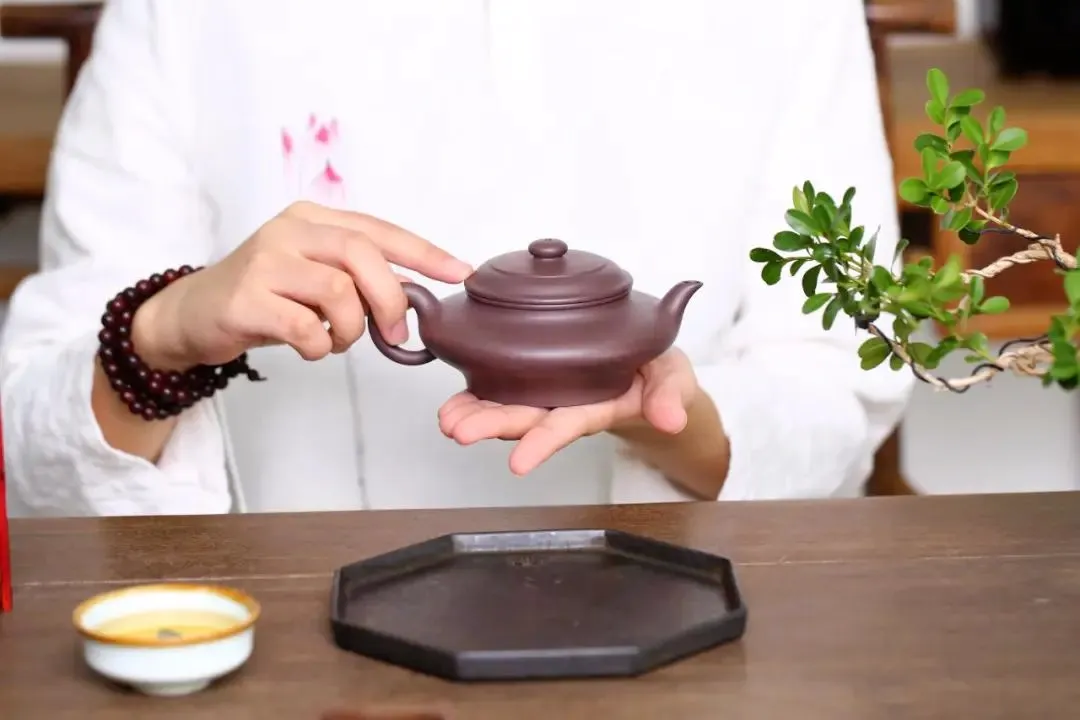
Flat purple clay teapot
3. Round purple clay teapot
Round purple clay teapots are the most suitable for brewing oolong tea.
Why? Because the stems of oolong tea are in the shape of a curled ball, and the round teapot provides enough space for the hemispherical tea leaves to fully stretch.
If you love to drink oolong tea, it is most practical to buy a round purple clay teapot. The reason is: after the round purple clay teapot is filled with water, the round wall allows the water to flow in the pot, and it can more gently combine the water and tea leaves, which is conducive to the tea.
Using a round purple clay teapot is suitable for brewing oolong tea. Next, you can further consider the material used for the round teapot, because different materials used in the same round teapot will also affect the tea brewing effect. Only by fully understanding can you buy a practical round teapot and no longer be “potted” in “pot”!
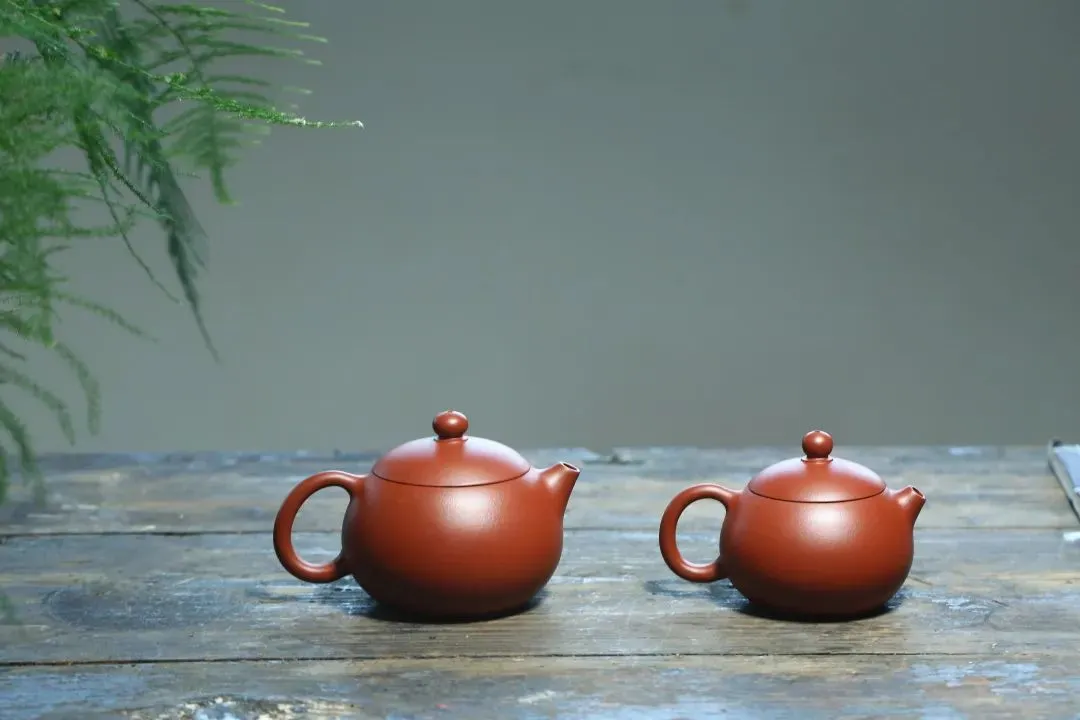
Circular purple clay teapot
Talking about it on paper is always superficial. To truly understand the business of making teapots, one must practice it oneself!
Although purple clay teapots are suitable for a wide range of teas, it is still recommended to use one teapot for one tea. If you choose the right purple clay teapot for different teas, the taste of the tea will be different, the tea aroma will be stronger, and the advantages of the tea will be better reflected.
The important thing is that you must personally brew tea to experience it, so that you can grasp the “tacit understanding” between tea and the teapot, know the relationship between clay and tea properties, and return to the original point that the teapot is based on tea.
